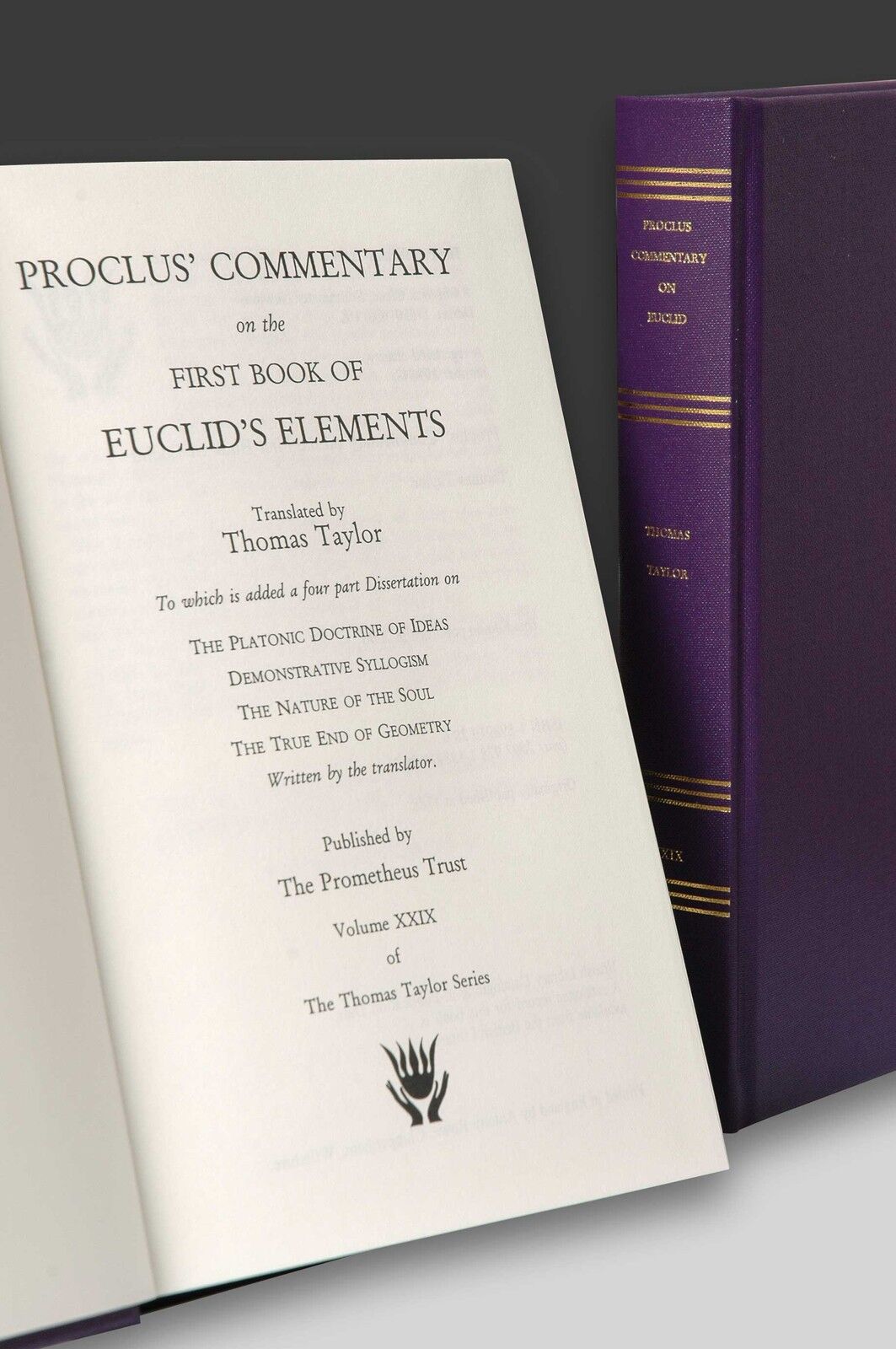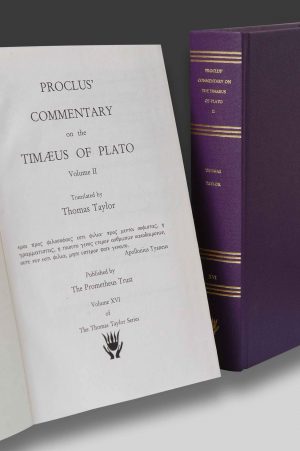Description
Proclus’ highly mystical commentary on Euclid’s Elements, in which the course of the first book is treated as pathway to the vision of “real being”: To be able to see what these commentaries reveal it is necessary to energise the spiritual intuition, relying on innate ideas. It is by mathesis, or as Taylor says, the ‘reminiscence of the eternal reasons resident in the soul’, that the innate ideas are evoked. So by mathesis, the soul withdraws from the outer realm of sensible images, and crosses over to intelligible reality. Once the geometrical abstractions collected up from exterior images, by the discipline of mathesis, are congruent with real ideas, the soul is able to survey real being. Or, as Proclus tells us, “geometry is extended through the universality of things, contains in itself the forms of all things and according to its supreme part surveys true beings, and teaches by images the properties of divine ornaments, and the powers of intellectual forms”. For example, he says the point represents Bound, the proceeding straight line, Infinite, and the Circle the energy of Intellect. He ‘places’ these forms firmly with Intelligible Reality.
To the Commentary of Proclus, Taylor adds a wide-ranging Dissertation (of around 100 pages in length) in four parts – on Ideas, Syllogism, Soul and the True End of Geometry.






Reviews
There are no reviews yet.